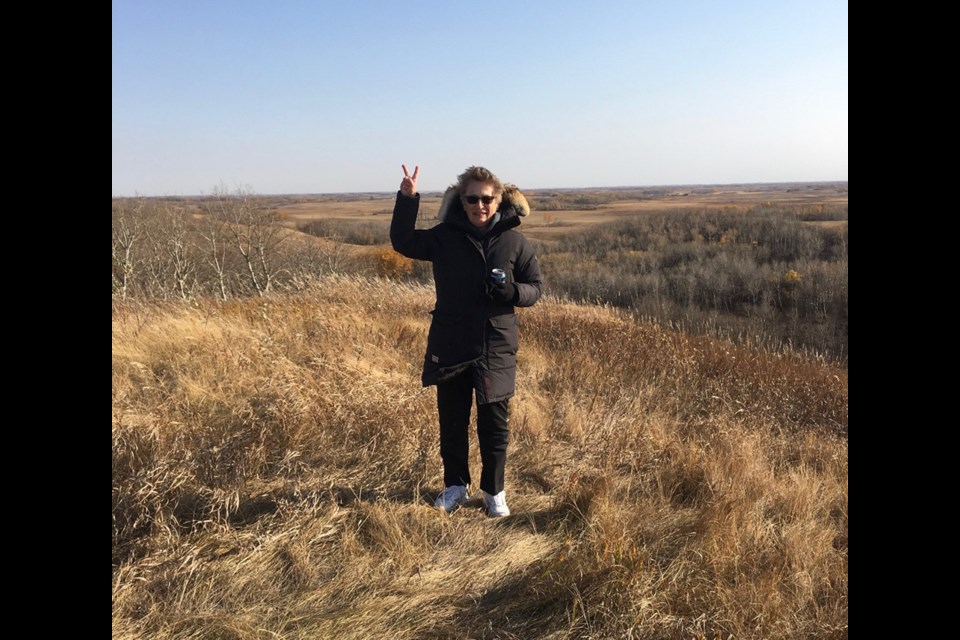Hiking the hills of Arrow River, Faye (Lelond) Campbell has immersed herself in history, one of her passions. She was born and raised at Arrow River, one of five children born to Douglas and Maude Lelond.
Faye and her husband Neil spent many years in Thompson and raised their children there. Campbell was an educator and taught most recently in Killarney before her retirement, when she elected to returned to her roots in Miniota.
Campbell has enjoyed several notable hikes in the Arrow River area with family members who were also up for an adventure.
When she and her cousins, Sheila Kokorudz and Kevin Lelond, went hiking this November just southwest of Arrow River toward the Assiniboine River Valley, they knew they would find history written in stone – an original house.
It was a step back in time when they came upon the original James Mitchell stone house. Campbell says, “We were awestruck, imagining the elegance of the old place and the pioneers coming up the hill for the first time. You could let your imagination go wild. A wonderful experience.”
From the Bridging the Years history book here is a summary of the man who built that house, a snapshot of the pioneering spirit that helped build the Arrow River area and settle the Manitoba prairies:
Mr. James Mitchell, wife and sons moved west from Ontario to the Arrow River district in 1882. Their homestead on the banks of the Assiniboine Valley, named Valley View, was one of the most picturesque places in Canada.
In 1895, they built one of the first solid fieldstone houses. For years it was a landmark and home for the weary traveler.
In 1882, the site of Upper Fort Garry in Winnipeg was demolished under the direction of Factor Anderson of the Hudson Bay Company. Mitchell purchased some of the original timber and had it transported by boat up the Assiniboine River to a landing place where he built a ferry to take people and vehicles across the river.
As well as operating the ferry, Mitchell built himself a small shack or building in the valley, where he, being qualified as a weaver in Scotland, did the same work for his friends and family. When he was at home and was called to the ferry by a bell he had set up, the customer would know his message had been received when a flag was hoisted.
The ferry being the main stopping place for many travelers, it was not uncommon for Mrs. Mitchell to awake in the morning and find her home filled with strangers. Their doors being never locked, they made a host of friends.
More information about the Mitchells can be found in Bridging the Years 1879 – 1967, pp 399 -402. The land remains in the Mitchell family.
Earlier in the year Campbell and her niece Tracy Lelond-Young hiked a high hill east of Arrow River called Standing Stones, named for an Indigenous Chief who had been buried there. The remains were exhumed some years ago, but a large rock marks the hollow on the hill top.
Another recent exploit took Campbell to the top of Mount Elsie, named after Elsie (McCleod) Fleming, a pioneer on that land. The view there takes in miles of cattle country.
Campbell has set foot upon some fascinating history since COVID has temporarily closed the drop-in centre where she and many in Miniota usually enjoy socializing.




